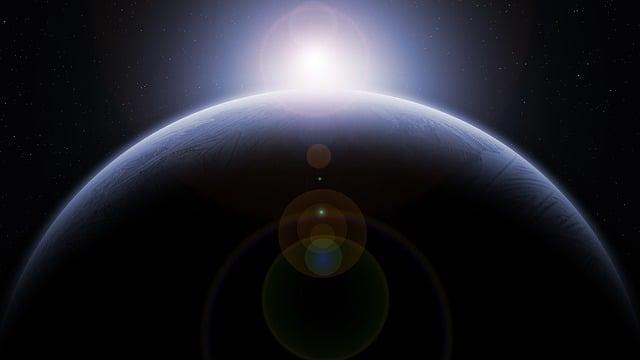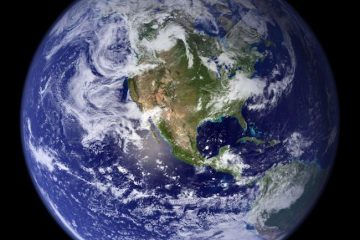In a world where the delicate balance of nature intertwines with the intricate web of climate patterns, the Gaia Theory emerges as a beacon of insight and contemplation. As we delve into the realms of environmental dynamics and Earth’s interconnected ecosystems, the Gaia Theory offers a unique perspective on how our planet functions as a self-regulating, living organism. Join us on a journey of discovery as we explore the fascinating relationship between Gaia Theory and climate change, unveiling the mysteries of our planet’s innate ability to adapt and evolve in the face of environmental challenges.
Table of Contents
- Understanding Gaia Theory and Its Role in Addressing Climate Change
- Exploring the Interconnectedness of Earth’s Systems through Gaia Theory
- Implementing Gaia Theory Principles to Combat Climate Change
- Harnessing the Power of Gaia Theory for Sustainable Environmental Solutions
- Q&A
- Concluding Remarks
Understanding Gaia Theory and Its Role in Addressing Climate Change
In the realm of environmental science, Gaia Theory emerges as a captivating concept that delves into the interconnectedness of the Earth’s biosphere. This theory, developed by scientist James Lovelock, proposes that our planet operates as a single, self-regulating system where living organisms and inorganic components interact synergistically to maintain environmental balance. At the core of Gaia Theory lies the idea that the Earth functions as a complex, dynamic entity capable of adapting to changes to sustain life.
One of the profound implications of Gaia Theory is its relevance in the context of addressing climate change. By recognizing the Earth as a living organism, interconnected and interdependent, we gain a deeper understanding of how human activities impact the delicate balance of our planet. Through this perspective, solutions to mitigate climate change can be approached holistically, considering the intricate relationships between ecosystems and the atmosphere. Embracing Gaia Theory could inspire innovative strategies that promote harmony between human civilization and the environment, fostering a sustainable future for generations to come.
Exploring the Interconnectedness of Earth’s Systems through Gaia Theory
One of the most intriguing concepts in environmental science is Gaia Theory, which proposes that Earth is a self-regulating system where living organisms interact with the non-living components to maintain a stable and balanced environment. This theory views Earth as a single, unified organism where various systems work together to ensure the planet’s overall health and sustainability.
When we delve into the intricacies of Gaia Theory, we uncover the profound interconnectedness between different Earth systems. From the atmosphere to the oceans, and from the land to the living beings, each component plays a vital role in maintaining the delicate balance of our planet. Understanding this interconnected web can help shed light on the impacts of climate change and how human activities influence these complex systems.

Implementing Gaia Theory Principles to Combat Climate Change
Implementing the principles of Gaia Theory can offer a holistic approach to address the pressing issue of climate change. By viewing the Earth as a single, self-regulating system, we can better understand the interconnectedness of various elements and how they impact the environment. Embracing this concept can lead to innovative solutions that work with nature rather than against it.
Key Strategies for Implementing Gaia Theory to Combat Climate Change:
- Enhancing biodiversity to create resilient ecosystems.
- Promoting sustainable practices that respect the Earth’s natural cycles.
- Investing in renewable energy sources to reduce our carbon footprint.
Benefits of Applying Gaia Theory Principles:
- Restoring ecological balance and promoting harmony with nature.
- Fostering community engagement and collaboration towards environmental stewardship.
- Creating a sustainable future for generations to come.
| Initiative | Description |
|---|---|
| Reforestation | Planting trees to absorb CO2 emissions. |
| Ocean Conservation | Protecting marine life and habitats. |
| Green Infrastructure | Implementing eco-friendly urban designs. |
Embracing Gaia Theory invites us to shift our perspective from seeing the environment as a collection of separate parts to acknowledging it as a unified whole. By treating ecosystems as interconnected and interdependent, we can unlock innovative approaches to combatting climate change. From regenerative agriculture practices to promoting biodiversity conservation, the applications of Gaia Theory offer a roadmap towards a more sustainable and resilient future.
Q&A
Q: What is Gaia theory and its relationship to climate change?
A: Gaia theory, proposed by James Lovelock in the 1970s, suggests that Earth functions as a self-regulating system. In relation to climate change, the theory posits that the planet maintains conditions suitable for life by controlling various factors, such as temperature and atmospheric composition.
Q: How does Gaia theory impact our understanding of climate change?
A: Gaia theory challenges traditional views of Earth as a passive entity, highlighting the interconnectedness of all living and non-living components. This holistic perspective underscores the importance of preserving the planet’s delicate balance to mitigate the effects of climate change.
Q: What role do humans play in the Gaia theory of climate change?
A: Humans are seen as a significant force in the Gaia system, capable of both disrupting and restoring equilibrium. Our activities, such as deforestation and fossil fuel consumption, influence Earth’s climate dynamics, emphasizing the need for sustainable practices to support Gaia’s self-regulating mechanisms.
Q: How can understanding Gaia theory help combat climate change?
A: By recognizing Earth as a complex, interconnected system, we can approach climate change from a holistic perspective. Incorporating Gaia theory into environmental policies and practices can foster a deeper sense of responsibility towards the planet and drive sustainable solutions to address the challenges posed by climate change.
Concluding Remarks
As we delve deeper into the intricate web of Gaia theory and its implications for climate change, it becomes evident that our planet is a dynamic and interconnected entity, a living organism in its essence. The synergy between Earth and all its inhabitants is a delicate dance that echoes through ecosystems and climate patterns alike.
In our quest to understand and mitigate the effects of climate change, embracing the wisdom of Gaia theory offers a new lens through which we can envision a harmonious future for both humanity and the natural world. Let us continue to explore, learn, and act in ways that honor the interconnectedness of all life on Earth, for in doing so, we nurture not only our planet but also our collective well-being.
As we navigate the ever-changing waters of environmental challenges, may the guiding principles of Gaia theory illuminate our path towards a more sustainable and balanced coexistence with the Earth and all its wonders. Let us tread lightly, with reverence and respect, knowing that our actions today shape the world of tomorrow.



0 Comments